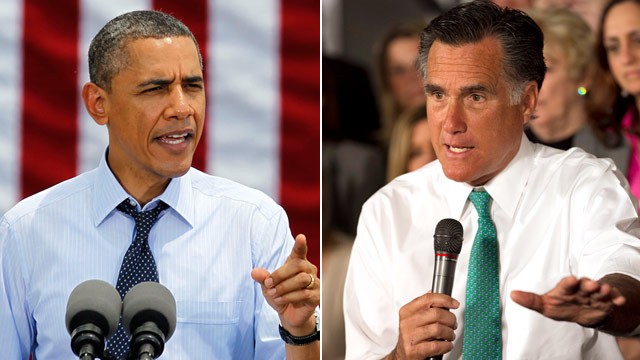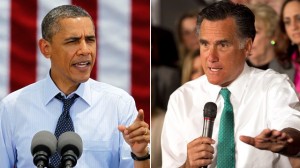With only 24 days until the Presidential election, there is much talk in the media about candidates’ positions, policies, and goals. Climate change is a critical issue, and a potentially deciding factor for many voters, yet neither Barack Obama nor Mitt Romney’s campaign focuses on it. Instead, the pressing topic for the 2012 campaign trail seems to be our reliance on foreign oil. Although neither candidate spoke much about energy policy or climate change in the first presidential debate on October 3rd, Joseph Aldy and Oren Cass, representing Obama and Romney, respectively, debated their candidate’s position on energy and climate change at MIT Energy Initiative’s Presidential Energy Debate. This debate was hugely beneficial in highlighting the candidates’ differing views.
So what are the candidates’ energy plans for the future? Here is a summarized and simplified breakdown of their views on key issues.
Keystone XL Pipeline
Romney plans to fast track the pipeline, which would stretch from Canada to Texas. Obama, who has approved the southern leg of the pipeline, is still reviewing the proposal to allow the full pipeline to be built. He has put off making a decision until health and safety impacts have been fully analyzed.
Renewable Energy
Obama plans to continue to maintain incentives and subsidies for renewable energy. He has previously proposed that 80 percent of our electricity production will come from sources like nuclear power, natural gas, and renewables. Romney plans to let the free market determine the best green companies and these companies’ success will be determined by how well they are able to survive without subsidies.
Coal: Again, the candidates’ views differ. Romney proposes to increase coal development, and plans to eliminate regulations and obstacles in order to speed up permitting. Obama plans to invest in “clean coal”, and set a 10 year goal of researching and implementing carbon capture and sequestration efforts.
Oil and Natural Gas: Both candidates wish to expand natural gas and oil production, and intend on using hydraulic fracturing and offshore drilling for extraction. However, the President plans to use federal regulations to control the extraction process, while Romney favors state regulations. In addition, Romney has proposed opening up areas off the coast of Virginia and North and South Carolina for drilling, and would eliminate the moratorium on offshore drilling. Obama, on the other hand, plans to maintain the drilling moratorium on the Pacific coast.
Nuclear Power: Both candidates consider nuclear energy to be a valuable addition to our current mix of sources. Nuclear has seen growth under Obama, as new reactors have recently been approved for the first time in 30 years.
Fuel Efficiency: Obama has proposed raising federal standards for fuel efficiency to 54.5 miles per gallon by 2025. Romney opposes fuel efficiency standards, and plans to reverse existing standards, as he sees them as harmful to domestic automakers.
Energy Independence: As previously stated, Romney plans on energy independence by the year 2020. His plan includes increasing state control over energy development, and increased oil and gas drilling . Obama has invested billions of taxpayer dollars in renewables in an effort to decrease American dependence on foreign oil. He also plans to increase oil imports from Canada. Both candidates view a decrease on our reliance on foreign oil as essential to national security.
EPA’s Mercury and Air Toxics Standards: Romney opposes this bill, which was issued in 2011 to regulate emissions from coal-fueled power plants. He is chiefly concerned by the potentially harmful effect that it will have on employment in the power plants. Obama, who allowed the bill to pass, sees it as beneficial to the health of our nation, based on EPA estimations which indicate that thousands of lives can be saved under the regulations put forth by this bill.
Cap and Trade Legislation: Although Mitt Romney initially supported caps on emissions in 2003, his current stance is that regulations on emissions could devastate the United States economy. New EPA pollution standards mean that under Obama, cap and trade efforts will probably progress. Previous cap and trade legislation died in the Senate in 2009, but variations on the bill could lead to actual implementation.
Both candidates have proposed an increase in energy production as a way to create more jobs, but there is evidence that even this will not be enough to employ a majority of the 23 million unemployed Americans. Mitt Romney has stated his goal of energy independence by 2020, but experts say that this may be an impossible goal. The proposal of energy independence is not a new one; it’s a promise that politicians have made since the 1960s.
Although Romney claims that Obama’s policies are “old and outdated, and the president has said that Romney does not understand energy, the candidates are similar in many respects. The candidates share a desire to continue America’s oil and gas boom, and the entirety of the Keystone XL pipeline will likely be approved by Obama if he is re-elected. It is also worth noting that both candidates acknowlege that global warming is caused by human activity and that it is a concerning issue.
As you head to the polls on November 6th, I urge you in your decision to strongly consider what each candidate’s energy policy would mean for the future of our nation.
Written by Leslie Wolf, Class of 2015



